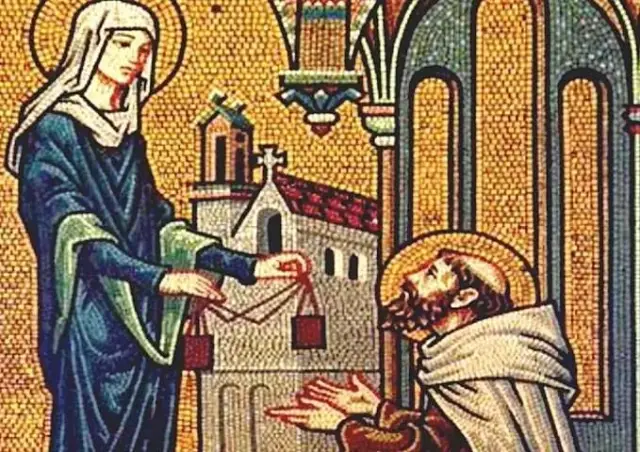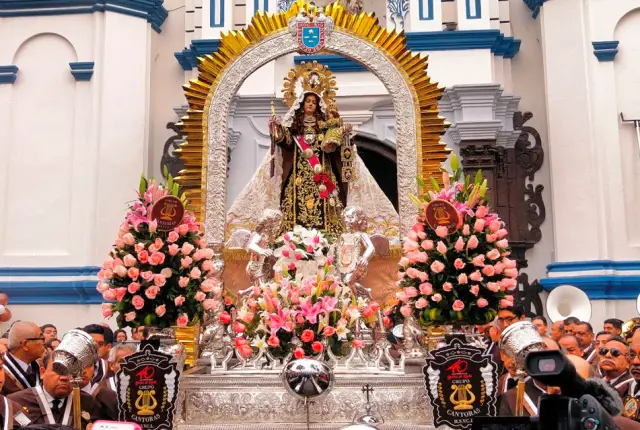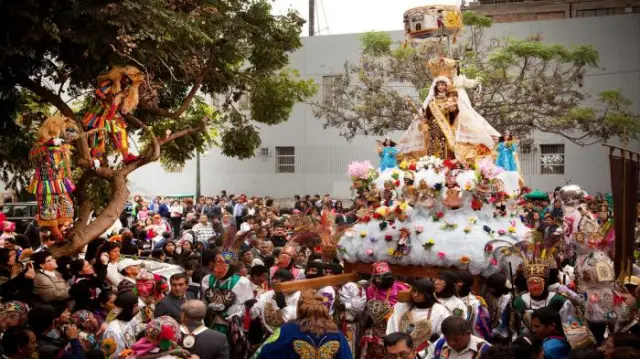The Day of the Virgin of Carmen is celebrated every July 16th in various regions of Peru, and is one of the most popular and colorful religious festivals on the Andean calendar. This date has deep Catholic and cultural roots, as it honors the Virgin Mary under the name of Carmen, considered the patron saint of transporters, fishermen, soldiers, and the souls in purgatory . Devotion to the Virgin of Carmen combines religious, historical, and traditional elements that have been deeply rooted in the Peruvian people since the colonial era, passed down from generation to generation as a symbol of faith and living culture. But why is it celebrated specifically on July 16th? In this article, we explain everything in detail, including its origin, the regions where it is celebrated with the greatest fervor, and how this devotion is part of the country's spiritual heritage.
Who is the Virgin of Carmen?
Our Lady of Mount Carmel is one of the most well-known devotions to the Virgin Mary in the Catholic world. Her name comes from Mount Carmel in Israel, where ancient hermits dedicated to prayer and contemplation lived. They venerated Mary as a model of spiritual life. This devotion was adopted by the Carmelite Order and has since spread throughout Europe and America, influenced by visions and miracles attributed to the Virgin, and the popularity of the Scapular of Our Lady of Mount Carmel , a symbol of salvation and protection. Her figure represents maternal love, divine guidance, and the hope for eternal life, which explains her immense popularity among the faithful.

Why is it celebrated on July 16?
July 16 was established by the Catholic Church as the official day to honor Our Lady of Mount Carmel because, according to Carmelite tradition, it was on that date in 1251 that the Virgin Mary appeared to Saint Simon Stock , Superior General of the Carmelite Order in England. During this apparition, the Virgin gave him the brown scapular and promised her protection to all who wore it with faith and devotion. Since then, the date has become a symbol of the spiritual commitment between Mary and her faithful, and has been commemorated in different countries around the world. In Peru, the celebration was introduced during the colonial era and was quickly adopted by peoples of the mountains and the coast, acquiring a syncretic character that unites Catholic liturgy with indigenous cultural expressions.
Meaning of the Virgin of Carmen in Peruvian culture
Protector of the peoples
In many parts of the country, the Virgin of Carmen is considered the spiritual protector of rural communities , especially in Andean regions such as Cusco, Huancavelica, and Ayacucho. Her image is associated with the protection of the home, crops, and animals, as well as with health and family life. During the festivities, thousands of people flock to temples and main squares to pay homage, participate in masses, processions, and traditional dances that strengthen social cohesion and the cultural identity of each community. The image of the Virgin is treated with profound respect and love, like a mother watching over her people.
Devotion of transporters and military personnel
In Peru, the Virgin of Carmen is also venerated as the patron saint of drivers, soldiers, fishermen, and sailors . Every July 16th, religious ceremonies and processions are held to pray for her protection. It is common to see vehicles decorated with flowers and ribbons, as well as fishing boats sailing out to sea with images of the Virgin. Truck drivers consider her their guide on the road, while the armed forces recognize her as their spiritual protector. This devotion demonstrates how the Marian figure has transcended the religious sphere to become an integral part of the daily lives of many Peruvians.

Regions of Peru where it is celebrated with the most fervor
Paucartambo, Cusco
One of the most iconic celebrations takes place in Paucartambo , a small town just a few hours from Cusco, where thousands of people gather each year to pay tribute to "Mamacha Carmen," as she is affectionately known. This festival was declared a National Cultural Heritage Site for its cultural, symbolic, and spiritual richness.
Duration: July 15-18, although activities may begin days earlier.
Highlighted activities include solemn processions, masses, folk dances such as the Qhapaq Qolla, Qhapaq Negro, Chunchos, and Saqra, as well as theatrical performances on religious and social themes.
Huancavelica
In this region, celebrations combine the religious with the festive in an explosion of music, color, and devotion. Local communities organize musicians, dancers, traditional bands, and fireworks , with processions where the image of the Virgin is carried on beautifully decorated floats. The faithful also make promises and offerings, thanking for favors received or asking for blessings for their families and economic activities.
Ayacucho, Apurímac and other regions
In departments such as Ayacucho, Apurímac, Junín, and Pasco, the Virgin of Carmen is considered the patron saint of various localities. These regions celebrate patron saint festivals with their own characteristics , but always with a common core: profound devotion to the Virgin and the affirmation of local customs through dances, traditional cuisine, and collective rituals.
Typical elements of the festival
The scapular
One of the central symbols is the brown scapular , which represents the protection of the Virgin Mary and her promise of salvation. The faithful wear it around their necks as a sign of faith and commitment, especially during Masses and processions on July 16th. It is common for blessed scapulars to be distributed during the celebrations, which the faithful keep as an amulet or spiritual relic.
Traditional dances
In places like Paucartambo, dances play a central role. They represent not only religious stories but also popular legends and social critiques. Each group of dancers wears elaborate costumes and masks that symbolize characters such as the devil, colonizers, or merchants. These dances are an artistic expression that expresses the Andean worldview and its relationship with the sacred.
Processions and masses
Celebrations include solemn masses, novenas, and mass processions , where the image of the Virgin Mary travels through the streets accompanied by bands and groups of devotees. Many people participate by carrying the image as a sign of gratitude or fulfillment of a promise, which creates an atmosphere of emotion and collective unity.

What does it mean for Peruvians?
Devotion to Our Lady of Mount Carmel reflects the living faith of the Peruvian people , where religion blends with ancestral tradition to form a unique spiritual identity. For many Peruvians, this celebration is not only an act of Catholic faith, but also a cultural manifestation that unites generations , reaffirms a sense of belonging, and connects the past with the present. Furthermore, it is an opportunity to gather as a community, celebrate life, and give thanks for the favors received. For all these reasons, July 16 has become a sacred and deeply emotional date for thousands of people across the country.
Frequently Asked Questions (FAQ)
What does the Virgin of Carmen represent for Peruvians?
It represents protection, faith, and tradition. It is a symbol of cultural identity and religious devotion in many regions of the country.
Why is it celebrated in July and not on another date?
Because July 16 commemorates the apparition of the Virgin to Saint Simon Stock in 1251, when she gave the scapular as a promise of salvation.
Where is this holiday celebrated most intensely?
In Paucartambo (Cusco), Huancavelica, Ayacucho, Apurímac and other Andean departments where the Virgin is the local patron.
What activities take place during the celebration?
Masses, processions, folk dances, distribution of scapulars, food fairs, and popular festivals.
What does the Scapular of Our Lady of Mount Carmel symbolize?
It symbolizes the protection of the Virgin and her promise of spiritual shelter to those who wear it with faith and Christian commitment.
A tribute that unites faith and culture
The Feast of Our Lady of Mount Carmel on July 16th is much more than a religious celebration in Peru. It is a day steeped in history, cultural syncretism, and profound fervor that has been passed down from generation to generation. From the colorful dances in Paucartambo to liturgical ceremonies throughout the country, this holiday lives on thanks to the devotion of the Peruvian people. Participating in it is not only an act of faith, but also a way to preserve the traditions that define us and strengthen our identity as a diverse and deeply spiritual nation.
